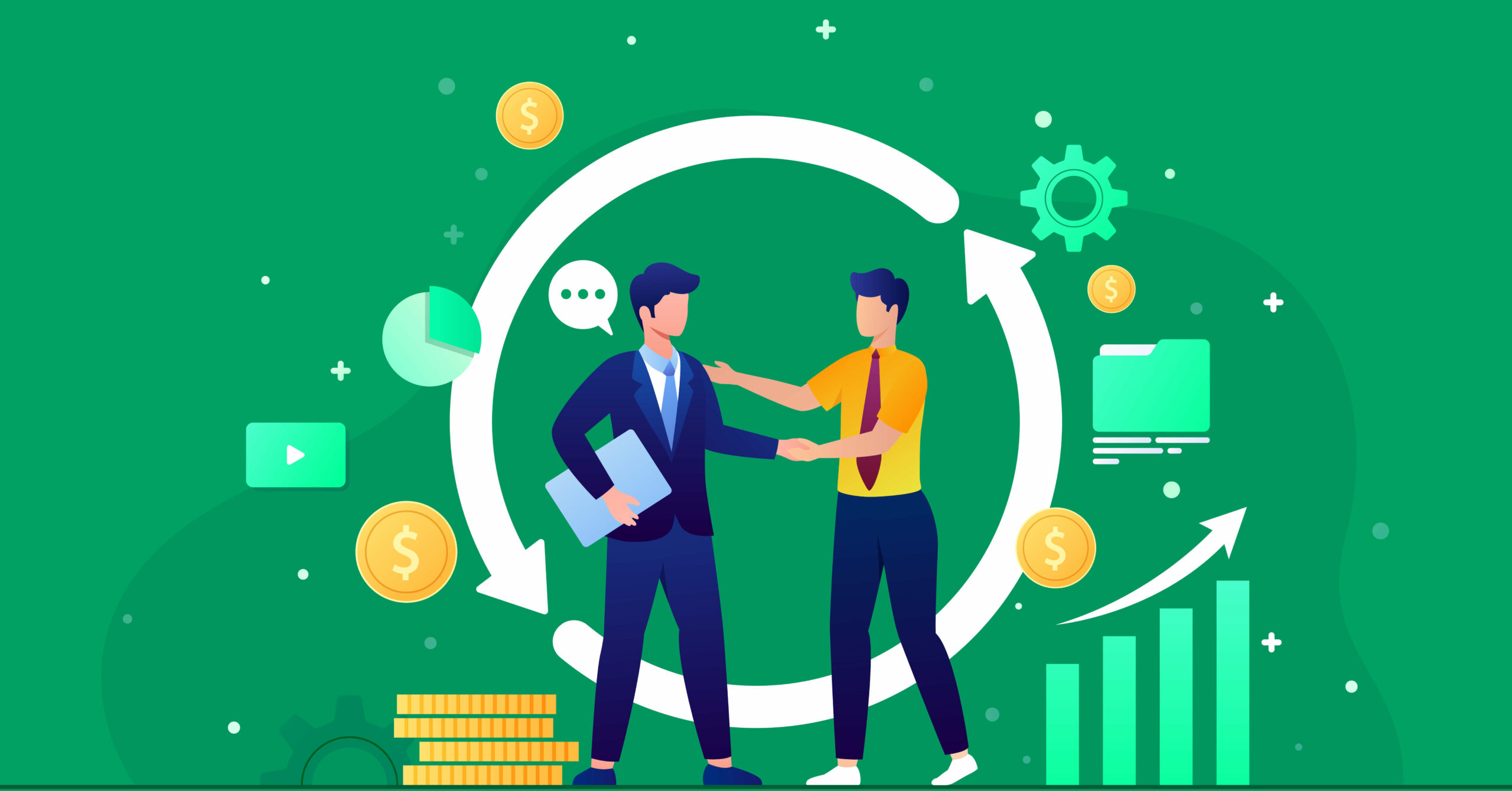
7 Game-Changing Best Practices for B2C Customer Service Excellence
By Nishat Shahriyar
March 14, 2022
Last Modified: November 13, 2025
Business to consumer (B2C) and business to business (B2B) are two ways of doing business; both are different. But one task is necessary for both of them – “Customer Service.”
Customer experience can make a difference when you sell to your customers directly. Fantastic customer experience plays a more significant role in new sales, repeat customers, and building a long-term loyal user base.
In this post, you will learn about business-to-consumer (B2C) customer services and the best practice to deliver excellent customer service.
What is B2C customer service?
When a business sells directly to its customer, it is known as a Business consumer (B2C). On the other hand, business to business (B2B) sells something to a large group, more likely another business.
In 1979, Michael Aldrich first coined B2C (business to consumers), who mainly used television to reach his customers. In the early days, traditional businesses directly connected with customers were considered business-to-consumer (B2C) models. But the internet changed the landscape. The rise of e-commerce helped the general public build online shops and services, directly connecting them with a wide range of buyers.

The range of B2C is wide. There are five types of B2C businesses serving millions of customers.
Direct Sellers
Direct sellers are the primary type of B2C. Anyone who sells directly to buyers without intermediaries is the most common type. These businesses use offline or online stores to connect directly with customers and often use advertising to entice consumers to buy their products emotionally.
Local shops, Shopify stores, or eBay sellers are these types of B2C businesses.
Online intermediaries
This type does not own products or sell anything independently, but they connect sellers with buyers and work as intermediaries.
For example, you can sell your products on eBay. eBay doesn’t own your business but can offer new customers to your store via traffics. eBay is an online intermediary. Etsy, Expedia, and Trivago are some other examples of online intermediaries.
Advertising-based
The advertising-based model works on content-based companies. These companies offer free content for traffic. When they get a good amount of traffic, they use it to monetize their business through advertisements, sometimes through subscriptions, or as online intermediaries for others.
New York Times offers users free articles, news, and in-depth opinion. In return, they show ads, offer subscriptions and make money.
Community-based
Social media networks mostly use the community-based models of B2C types. Here, most companies offer users a free platform, value a user’s interest, and then sell ways to businesses to connect with the customers.
Business uses these platforms to connect with their customers, acquire new users, and advertise their brands to a broader customer base using interest metrics. Twitter, Facebook, Linkedin, Reddit, and Quora are community-based B2C companies. They offer customer data indicating interest in specific products or services to businesses use in their marketing campaigns. That’s both a win-win for the platforms and the business.
Fee-based
In this business model, companies offer users some free services or products to use their premium services. Business insiders offer free articles for everybody, but their insider prime articles are available for premium users.
Netflix, Disney plus, HBO Max are fee-based B2C companies that offer direct content to customers for monthly fees. Most subscription businesses are in the fee-based B2C business.
Difference between B2B & B2C customer service
Although customer service is essential for both B2C and B2B, the level of attention required is not the same. Customer service for business and consumers are different on many levels.
At the B2C level, you have to connect with your buyer directly. On the other hand, businesses don’t often need direct contacts or emotional connections like direct consumers.
B2B customer service requires more time, is complex, and has significant issues. B2C customer service happens one to one, sometimes takes less time, and could be done with one contact.
The B2C business model serves a significant customer base, so customer service has to deal with more customers. B2B models tend to make sales big in volumes but have a small customer base.
In the B2C model, a single person does the transaction and it is easy to offer customer support to a single user through help desk software. In contrast, B2B customer services involve departments moving a particular order from start to finish.
Best practice for B2C customer service
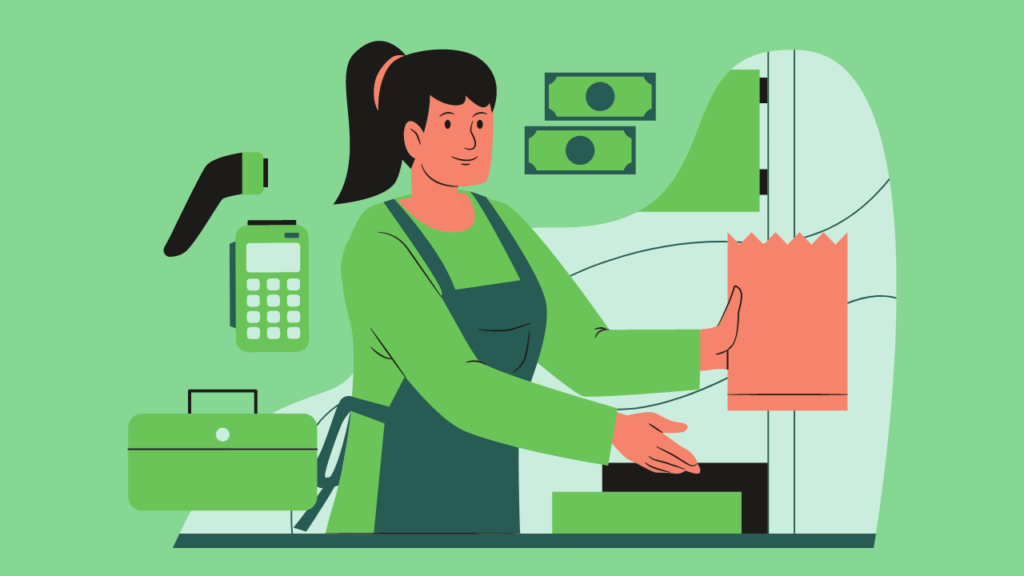
Businesses that rely on the B2C model always have to maintain healthy relationships with their customers by offering amazing customer service. Here are the best seven practices of business to consumer (B2C) customer service:
1. Build Self-Service for Customers
The main goal of B2C customer service is to satisfy your customer no matter what problem they are facing. Sometimes it is impossible to attend to all customers if you are running a small team of support staff.
But you can use self-services to reduce customers support tickets and help your customers to help themselves. Customers often look for answers in the internet space for their problems before contacting support for help. Use this to your advantage by creating a knowledge base, intelligent chatbots, and in-depth guides.
Take data from your help desk tickets and identify top issues, use the information to level up your knowledge base or tutorials. You can make out most of self-service using the following:
- Proper documentation page explaining all features and benefits related to your products or services
- Extended knowledge base with in-depth articles
- Essential how-to guides with use cases and explaining repeat issues
- Video tutorials explaining complex issues
- Link your social media profiles for instant contact
- Easy to access your support team if needed
- Use chatbots to increase first contact satisfaction with pre-written questions and answers
- Feature request or idea sharing options
- Offer community forums where users can find help from each other
- Suggest related documentation in the search bar while users search about specific topics
Using these tactics and SEO-focused self-services, you can level up your business B2C customer service.
2. Provide Fast Service
B2C customer service is direct to customer-focused service. Here you have to attend to customers one by one, and most customers are doing business with you on the go. They are not business companies but individuals. And they value their time when they contact your support.
When a customer contacts your support, most times, it is their last resort for solutions. They expect a fast solution from your customer support. At this moment, your support team’s efficiency will determine customer satisfaction. Incorporating proactive customer support and 24-hour support can move this further along.
Forrester reported an estimated 45% of US online adults abandon their online purchases if they can’t find an immediate answer to their question. Also, around 66 percent of consumers believe that valuing their time is the most significant aspect of good online customer service.
By valuing your customer’s time and providing fast service, you can build a loyal customer base. You can deliver automated email replies based on topics and words. Using a good help desk plugin, you can set up workflows and automatically make them work on your specific ticket events. Quick services will increase customer satisfaction and loyalty.
3. Focus on Mobile
The tech landscape is changing fast. More and more people are now using smartphones. Globally, over 6 billion people use smartphones to connect with the internet, send messages, shop, and more. These people use smartphones in their everyday life and it is general to assume they will use smartphones to contact your customer service.
It would be best to consider how your business operates in the mobile age. 63 percent of Americans use their mobile device to request customer service several times a month or more. If your business is not mobile-friendly, you are losing a big chunk of revenue every month.
The first step to mobile, your help desk should be mobile friendly. Customers should connect with your support from a smartphone browser whenever they wish. It would help if you also had a mobile-focused B2C strategy across your business. Having a multichannel approach will increase your customer service experience in the long run.
4. Use Social Media for Meaningful Engagement
Nowadays, social media play a significant factor in B2C customer service. How your customers interact with you on social media and handle situations on these platforms often influences the positive-negative reaction.
For B2C businesses, word of mouth is essential for marketing. Organic marketing often helped brands rise to the top. According to a study, 83 percent of consumers say word-of-mouth influences their shopping.
Going multichannel with your customer service and having an active social media presence will help you connect with your existing consumers. Your customers can engage with you organically, tweet you, comment, and send you messages on public platforms. These public interactions will allow others to see how you care about your consumers and leave a positive impact on their minds. Even if they are not your direct customers, your interaction with others will often prompt them to recommend you to their friends and family. That’s how powerful public interaction could be if you handle it properly.
Here is an example of pet food brand Chewy genuinely doing meaningful things for customers, and see how customers respond on Twitter.

5. Prioritize Customer Satisfaction
Relationship with consumers in a B2C experience is uncertain. Customers can leave your service, and stop using your products anytime they choose. This is why you should focus on building loyalty among your user base.
The fast way to build this is by going beyond rules and processes, surprising them with unexpected ways! You are not a massive brand like Apple or Rolex; there are no mad fans around your products. How can you take your relationship with customers to the next level?
You have to treat your customers one to one for their loyalty. It is hard to gain consumer loyalty. But how you treat your users will set you apart from your competitors. Do what your competitors are not doing and do it better. Surprise them when customers are not expecting much. This will show you are willing to go beyond your rules to solve a customer’s problem.
Zappos, a fashion brand always put customer service before anything. It is so obsessed with customer support that Zappos will take an order at late midnight and deliver it before breakfast! It offers free returns frequently to surprise first-time customers with 1-day delivery.
Find out what you can do in your business to delight customers like that and do it.
6. Segment Target Customers Wisely
B2C business offers their service to every type of customer. It is critical for fast revenue generation for any business. But when the business scales, it is necessary to segment your customers well.
Customer segmentation helps you learn more about your target customer base from time to time. Proper segmentation will help you target users with the marketing campaigns and you can use the data to re-target them again. You can segment your customers to prioritize support based on specific events like purchases, ticket volume, tags, priority, and predicted lifetime value.
You can automate your customer support and contact segmentation with workflows using excellent customer relation management (CRM) and help desk software. This will make the process more efficient and save time for your customer support team.
7. Easy Access to Customer Data
Building a meaningful relationship with customers in B2C customer service is not easy if your agents don’t have easy access to your customer data. Your customer data should be accessible to agents when needed.
Most times same customers will reach out to your customer service for different problems. Sometimes they will be assigned to another agent than the previous one. Showing their previous conversation and syncing all data in one place can help new agents to pick up right from the previous tickets.
Help desk integration with various services can help you sync customer data in support tickets. For example, Fluent Support help desk plugin for wordpress automatically syncs customers’ data and shows them right in their tickets. It helps agents know more about the customer’s previous purchases, conversations, and FluentCRM tags. Integrations and built-in functionality within the help desk will reduce back and forth conversations about additional information from users. Your customer support agents can directly assist customers with their problems without wasting their valuable time.
Conclusion
B2C customer service is easy to navigate using best practices to get the most out of your customer service team. Many aspects of B2C customer service are less complex than B2B.
Take extra steps to satisfy your customers, build long-term relationships, and focus on improving the process to save time for both support agents and customers. Invest in efficient customer help desk software, learn more about your customer behavior, and provide quick solutions accordingly.
Start off with a powerful ticketing system that delivers smooth collaboration right out of the box.






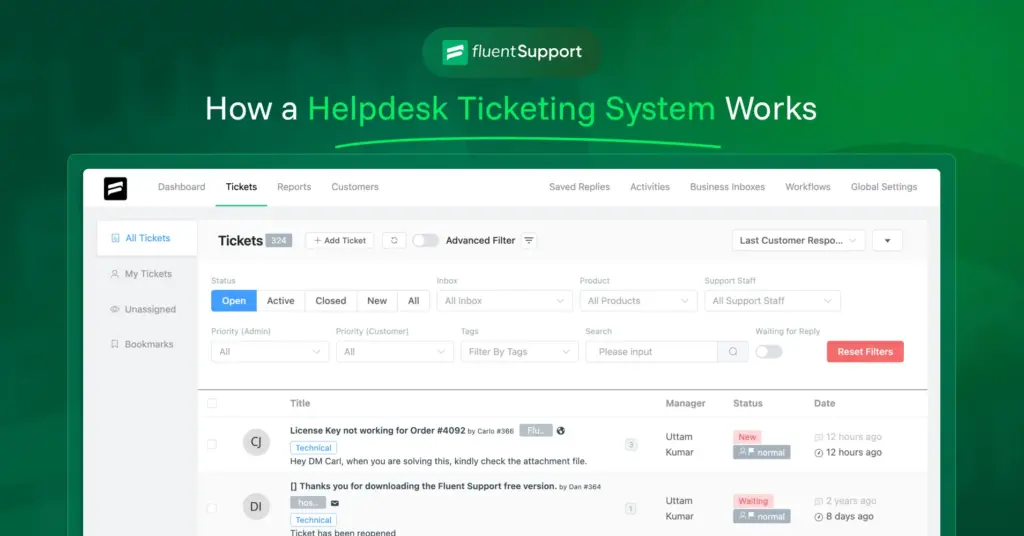
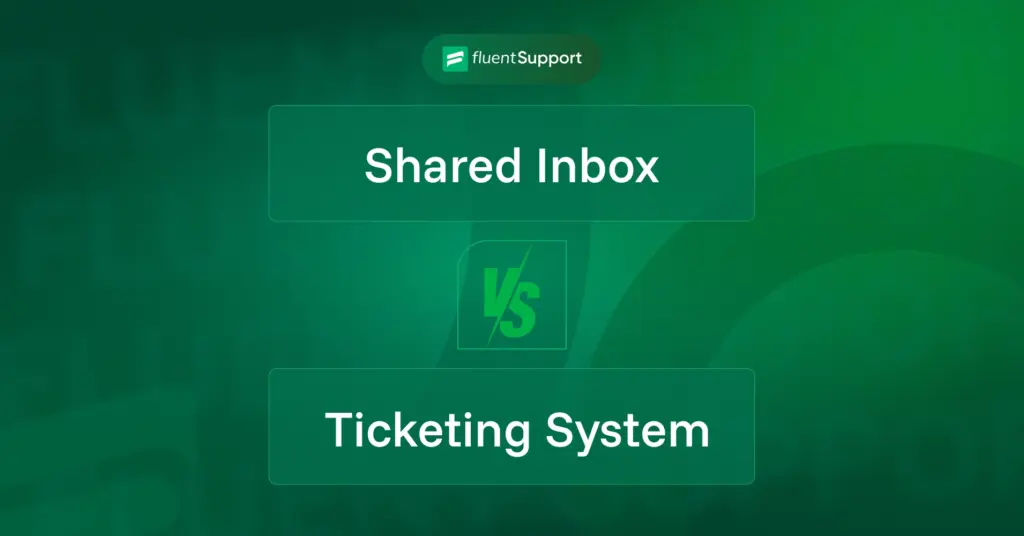
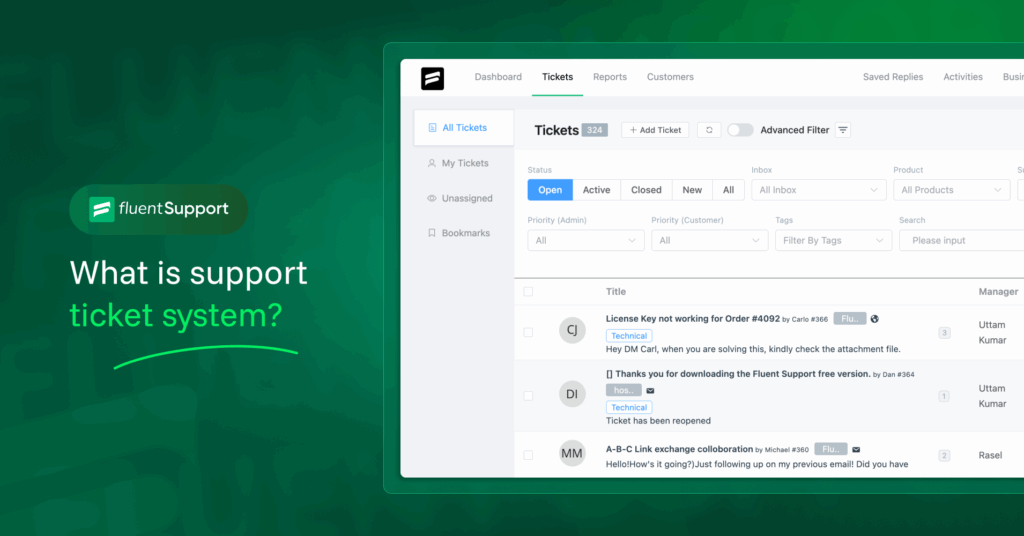
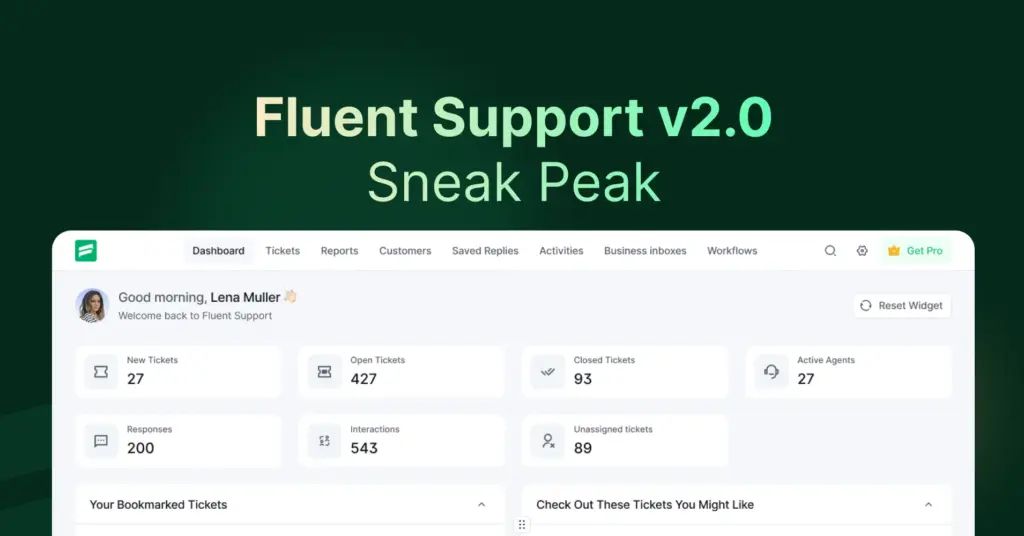
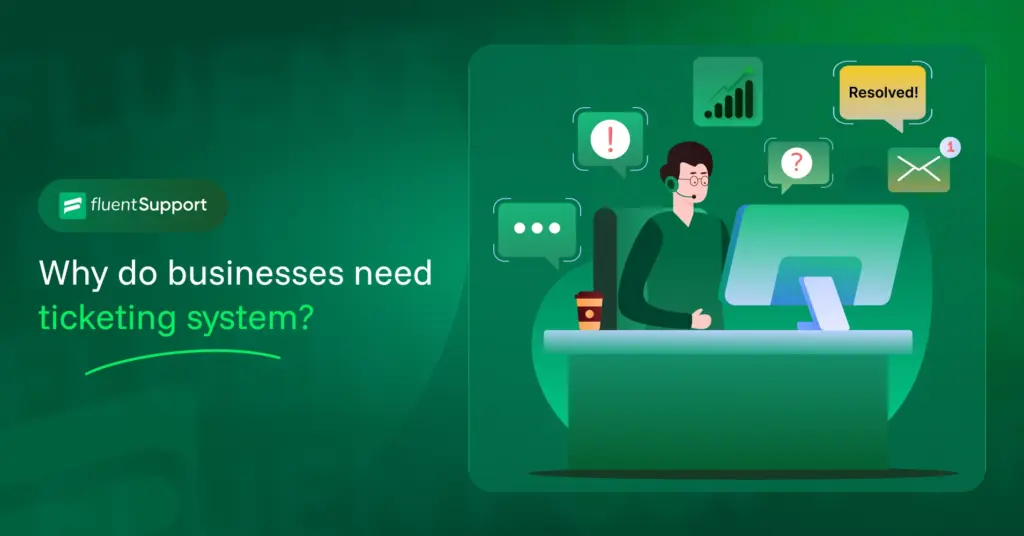

Leave a Reply